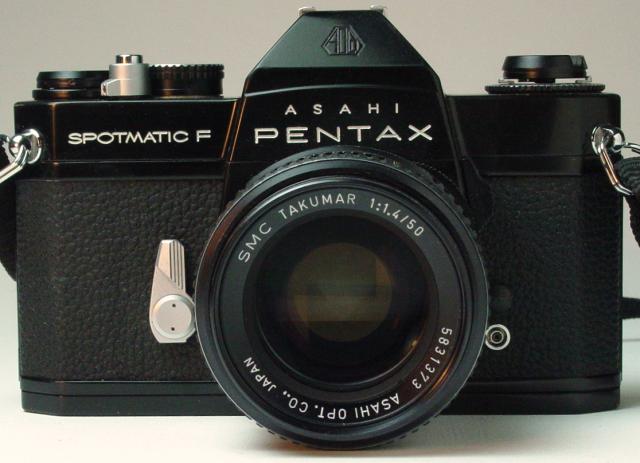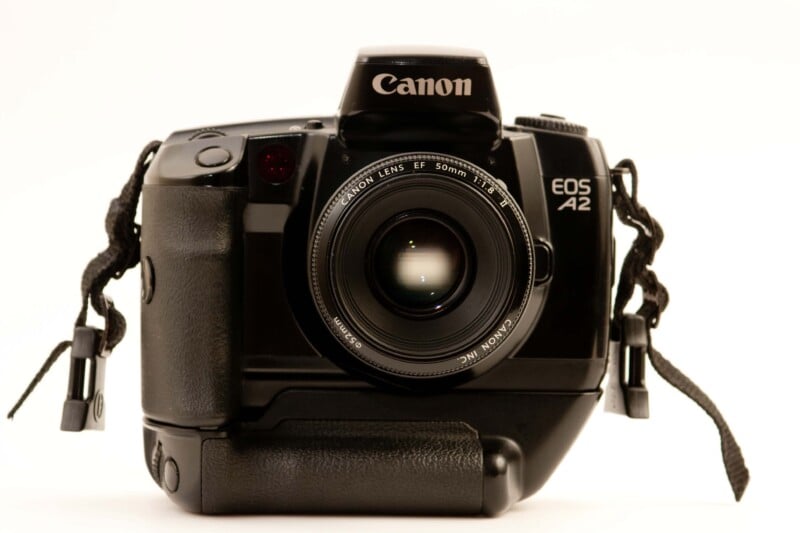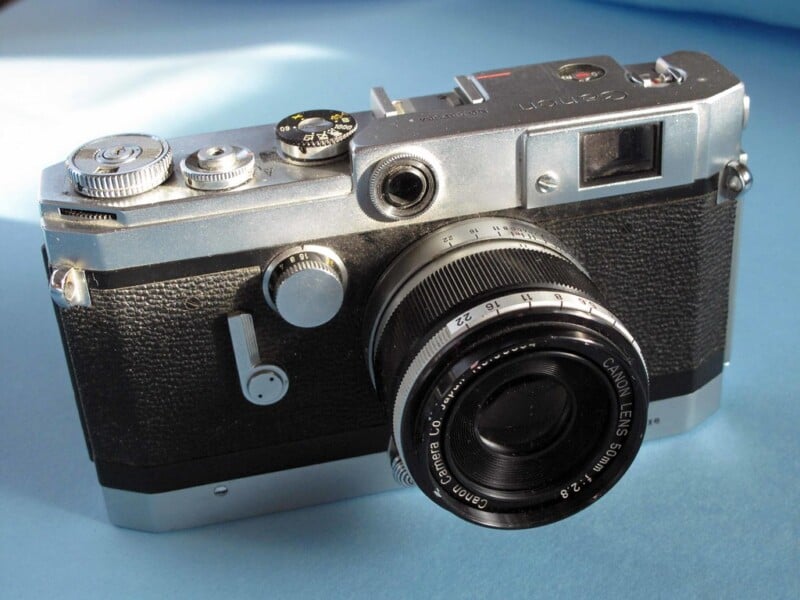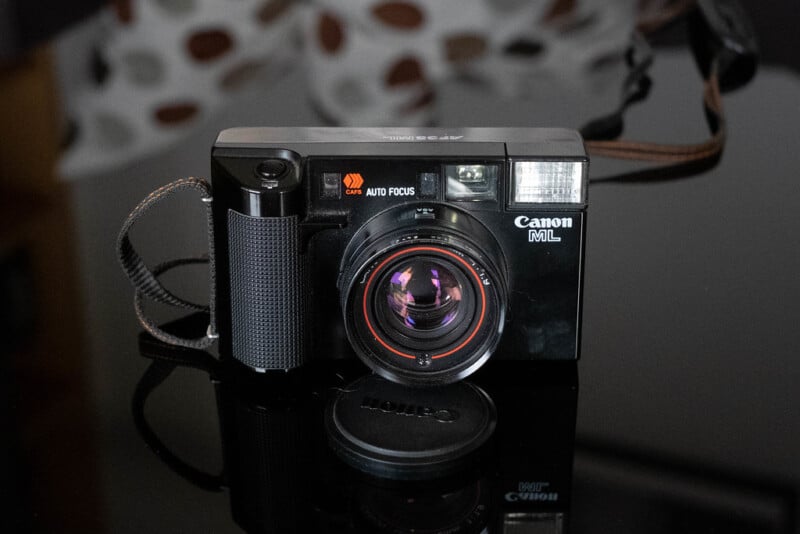![]()
The resurgence of film photography in recent years has breathed new life into the world of analog cameras and for many, the 35mm format remains the gold standard. Its perfect balance of image quality, convenience, and affordability makes it a favorite among both newcomers and seasoned photographers.
While shiny new film cameras are rare and often prohibitively expensive, the used market is brimming with incredible bargains for those seeking a budget-friendly entry into the analog realm.
Finding the right 35mm camera for your needs doesn’t have to break the bank. Whether you’re a student experimenting with film, a digital photographer exploring new textures, a hobbyist chasing nostalgia, or a professional simply wanting an affordable film camera, the market offers a wide range of options. Some brands are renowned for their legendary optics, while others are celebrated for their simplicity and reliability. and all can be found for surprisingly reasonable prices.
From fully manual SLRs to autofocus SLRs to user-friendly compacts, these cameras offer timeless design, robust build quality, and the potential to create stunning images without costing a fortune. We’ll highlight cameras that excel in various categories, including affordability, ease of use, lens compatibility, and creative potential.
So grab your favorite roll of film, and let’s dive into the world of accessible 35mm photography—where art and nostalgia meet on a budget.
When shopping, be sure to check out KEH Camera. They are PetaPixel’s favorites when it comes to used photography gear in the United States, especially used film cameras and vintage lenses. We also encourage you to check local shops like Portland, Oregon’s Blue Moon Camera and Machine as well as Robert’s Camera (UsedPhotoPro).
At a Glance
Fully Manual & Semi-Manual SLRs
Minolta X-570 / X-700
 Licensed under CC-BY-SA 2.0
Licensed under CC-BY-SA 2.0The Minolta X-570 and X-700 are iconic 35mm SLRs from the 1980s. The X-700 is the flagship model, featuring full Program mode, aperture-priority, and manual modes, along with TTL (Through-The-Lens) metering. Its Minolta Rokkor lenses are highly regarded for their sharpness and excellent build quality. The X-570 is a simplified version, lacking the full Program mode but retaining the useful metering display in manual mode, making it popular among enthusiasts who prefer creative control.
Both cameras feature a bright viewfinder, manual focus, and compatibility with Rokkor MD and MC lenses. Their durable yet lightweight builds make them favorites for both beginners and professionals. I’ve personally had an X-700 since I first began shooting photos, and it remains one of my favorite 35mm camera bodies.
Nikon FA
 Licensed under CC-BY-SA 2.0
Licensed under CC-BY-SA 2.0The Nikon FA was a groundbreaking SLR, introducing Nikon’s innovative Matrix metering system, which analyzes the scene for accurate exposure. It offers aperture-priority, shutter-priority, manual, and full Program modes, catering to a wide range of users. Compatible with Nikon’s extensive F-mount lens system, the FA supports both AI/AI-S and pre-AI lenses (with limited functionality) — the latter feature being quite unusual among Nikon models of that (and later) eras.
The FA’s metal construction ensures durability, while its compact design is portable. The FA’s combination of cutting-edge technology and traditional manual features makes it a versatile choice for film photographers seeking reliability and sophistication — and if you have a Nikon DSLR, you can use your AI/AI-S lenses on it, too!
Nikon FE / Nikon FM
 Licensed under CC-BY-SA 2.0
Licensed under CC-BY-SA 2.0The Nikon FE and FM are beloved manual-focus 35mm SLRs. The FE offers aperture-priority auto-exposure with manual override, while the FM is entirely mechanical, requiring no battery for operation except for the light meter. Both models feature durable metal construction and Nikon’s F-mount, which is compatible with an extensive range of lenses, from vintage AI and AI-S to more modern AF and AF-D lenses (though not AF-S or AF-P). The cameras share a compact, classic design and bright viewfinders with interchangeable focusing screens. They are ideal for photographers seeking simplicity (FM) or a blend of automation and manual control (FE).
A bit of an anecdotal side note: in my years of buying cameras and fixing/reselling them, the Nikon FE had the lowest rate of failure — that is, if handed a box of 100 cameras of 20 different models in unknown condition, the FE was always the most likely to still be working. Interestingly, I cannot say the same of its successor, the FE2. Take that for whatever it’s worth (possibly not much).
Olympus OM-1 / OM-2
 Licensed under CC-BY-SA 2.0
Licensed under CC-BY-SA 2.0The Olympus OM-1 is a fully mechanical SLR with a compact, lightweight design that revolutionized the SLR market. It features a bright, oversized viewfinder and precise manual controls. The OM-2 adds aperture-priority auto-exposure and innovative off-the-film (OTF) metering for improved accuracy in tricky lighting. Both cameras are compatible with Olympus Zuiko lenses, known for their excellent optics. The OM system’s compactness extends to its lenses and accessories, making it a favorite among travelers and street photographers. These cameras are celebrated for their build quality, ergonomics, and reliability.
Pentax KX / KM
 Licensed under CC-BY-SA 2.0
Licensed under CC-BY-SA 2.0The Pentax KX and KM are part of Pentax’s classic K-series. The KX features advanced metering and a depth-of-field preview, appealing to serious photographers. The KM is a more straightforward model, aimed at beginners, with fewer features but the same durable, all-metal construction. Both cameras are compatible with Pentax’s K-mount lenses, offering a wide selection of affordable, high-quality optics. Their intuitive controls and robust builds make them ideal for both new and experienced film photographers.
Yashica FX-103 Program / FX-3 Super 2000
 Licensed under CC-BY-SA 2.0
Licensed under CC-BY-SA 2.0The Yashica FX-103 Program is an electronically controlled SLR with Program, aperture-priority, and manual modes. It offers compatibility with the high-quality Carl Zeiss T* lenses for the Contax/Yashica mount, making it a popular choice for enthusiasts. The FX-3 is a more straightforward, fully mechanical option, beloved for its reliability and compact design. Both cameras share the same lens mount, giving users access to a broad range of lenses. The FX-103’s advanced automation complements the FX-3’s minimalist charm, catering to photographers with varied preferences.
Pentax Spotmatic F
 Licensed under CC-BY-SA 2.0
Licensed under CC-BY-SA 2.0The Pentax Spotmatic F is a classic 35mm SLR featuring TTL metering and compatibility with M42 screw-mount lenses. It offers reliable metering, a bright viewfinder, and a sturdy, all-metal body. Known for its simplicity and robustness, the Spotmatic F pairs seamlessly with the new line of SMC (Super Multi-Coated) Takumar lenses released alongside it, renowned for their optical quality and smooth focusing mechanisms. Unlike the original Pentax Spotmatic (and several other models), the SP F features open-aperture metering, meaning the camera will automatically close down the aperture (to whatever you’ve set at it) at the moment of exposure.
Autofocus SLRs
Canon EOS A2
 Licensed under CC-BY-SA 2.0
Licensed under CC-BY-SA 2.0Designed for advanced amateurs and professionals and introduced in 1992, the Canon EOS A2 features a 5-point autofocus system, shutter speeds up to 1/8000s, and multiple metering and exposure modes. A highlight is its rear-mounted Quick Control Dial for seamless adjustments. The camera is compatible with Canon’s extensive EF lens lineup, ensuring exceptional optical quality. Its balanced mix of advanced features and intuitive operation make it an excellent choice for enthusiasts seeking performance and flexibility.
Nikon N80 / N90
 Licensed under CC-BY-SA 2.0
Licensed under CC-BY-SA 2.0The Nikon N80 and N90 (also known as the F80 and F90) are advanced autofocus SLRs aimed at serious enthusiasts. The N80 offers a compact design with intuitive controls, matrix metering, and full compatibility with Nikon’s F-mount AI, AI-S, AF, AF-D, and AF-S lenses. The N90, released earlier, is bulkier but more rugged, with faster AF and professional-grade build quality. Both cameras provide excellent exposure accuracy, multiple shooting modes, and flash compatibility.
While the N80 appeals to those wanting portability, the N90 is favored for its durability and speed. The N90 supports metering with AI and AI-S lenses (center-weighted or spot only, no matrix metering), while the N80 does not. However, the N80 can utilize Nikon lens VR (with appropriate autofocus VR lenses, of course), while the N90 cannot. AF-P lenses are not supported (at all) by either camera, nor are non-AI lenses (they simply won’t mount unless they’ve been converted).
Minolta Maxxum 5
 Licensed under CC-BY-SA 2.0
Licensed under CC-BY-SA 2.0The Minolta Maxxum 5 is a compact and lightweight autofocus 35mm SLR aimed at beginners and enthusiasts. Released in the early 2000s, it features a 7-point AF system, Program and manual exposure modes, and compatibility with Minolta A-mount lenses. Its built-in flash, intuitive controls, and fast operation make it an excellent choice for photographers seeking convenience without sacrificing performance. The Maxxum 5 also supports wireless flash, adding versatility to its compact package.
Any users of Sony A-mount cameras will be able to use their lenses on the Maxxum 5.
Pentax MZ-50
 Photo by Hamish Gill at 35mmc
Photo by Hamish Gill at 35mmcThe Pentax MZ-5 and MZ-7 are excellent and affordable autofocus SLRs, catering to different audiences, but both highly capable. The MZ-5 features a classic design with manual controls for shutter speed and aperture, making it ideal for those who enjoy traditional photography workflows. The MZ-7, while similar in build, is geared more towards automation with added program modes and simplified controls.
Both cameras utilize the Pentax KAF mount, including the highly regarded FA-series autofocus lenses and older manual-focus K-mount options. Both feature a built-in pop-up flash, lightweight construction, reliable autofocus system, and Program, Tv, Av, and manual modes. The MZ-5 stands out for its top-mounted dials and intuitive layout, while the MZ-7 appeals to users seeking a more automated experience. Affordable and user-friendly, these models are excellent choices for photographers exploring film with modern conveniences.
The MZ-5 is one of my favorite affordable 35mm cameras — the design is ergonomically pleasing, and the more classic controls are a blast to use.
Nikon N6006
 Licensed under CC-BY-SA 2.0
Licensed under CC-BY-SA 2.0The Nikon N6006 (known as the F-601 in some markets) is an advanced autofocus 35mm SLR released in the early 1990s, aimed at enthusiasts seeking a balance of automation and manual control. It features Nikon’s F-mount, allowing compatibility with a wide range of lenses, including both manual-focus AI/AI-S lenses (with some limitations) and autofocus lenses, making it highly versatile.
The N6006 offers program, aperture-priority, shutter-priority, and manual modes, catering to photographers with varying levels of expertise. Its built-in matrix metering provides accurate exposures in most lighting conditions, while center-weighted and spot metering options add flexibility. The camera includes a top LCD panel for easy access to settings and a built-in pop-up flash for convenience.
Rangefinders
Canon VT
 Licensed under CC-BY-SA 2.0
Licensed under CC-BY-SA 2.0The Canon VT is a 1950s rangefinder camera designed for professionals and enthusiasts. It features a metal focal-plane shutter, interchangeable lenses using the Leica thread mount (LTM), and a horizontal trigger mechanism for quieter operation. Its robust construction and compatibility with Canon’s high-quality LTM lenses make it a reliable choice for vintage camera lovers.
Canon 7
 Licensed under CC-BY-SA 2.0
Licensed under CC-BY-SA 2.0The Canon 7 is a 1960s rangefinder camera with a built-in selenium exposure meter and a unique bayonet mount for the 50mm f/0.95 lens, one of the fastest lenses ever made. It also supports Leica screw-mount lenses, offering versatility. The Canon 7 is prized for its robust build, a large viewfinder with selectable frame lines, and exceptional optics.
The Canon P is also worth looking at – it is incredibly similar but lacks the built-in light meter. I personally own one and prefer it over the Canon 7 on a purely aesthetic level (it’s also easier to repair). It does, however, generally command somewhat higher prices.
Canon Canonet QL17 G-III
 Licensed under CC-BY-SA 2.0
Licensed under CC-BY-SA 2.0The Canon Canonet QL17 G-III is a compact rangefinder with a 40mm f/1.7 lens. It offers Program and manual modes and features Canon’s Quick-Loading (QL) system for fast film changes. Known for its very sharp and fast lens, versatile 40mm focal length, and portable design, the QL17 is perfect for street, travel, and portrait photography. Its reliable mechanics and affordable price have earned it a cult following among film enthusiasts.
Minolta Hi-Matic E
 Licensed under CC-BY-SA 2.0
Licensed under CC-BY-SA 2.0The Minolta Hi-Matic E is a compact 1970s rangefinder camera with a sharp 40mm f/1.7 lens. It features a fully automatic exposure system powered by a CdS metering cell, making it simple for beginners to use. Its leaf shutter ensures quiet operation, and its compact design makes it ideal for everyday photography. The Hi-Matic E combines excellent optics with ease of use, making it a favorite among vintage camera fans.
Compacts
Olympus XA/XA2
 Licensed under CC-BY-SA 2.0
Licensed under CC-BY-SA 2.0The Olympus XA is a compact 35mm rangefinder featuring a sharp 35mm f/2.8 lens and manual rangefinder focusing. Its unique clamshell design protects the lens and makes it pocketable, while the aperture-priority auto-exposure system offers creative control.
The XA2, a simpler version, uses zone focusing and program auto-exposure, making it more beginner-friendly. Both models deliver excellent image quality, with the XA appealing to enthusiasts and the XA2 to casual photographers. Both cameras are downright petite, easily slipping into a jacket or pants pocket.
Olympus Stylus Zoom 105 / 115 / 140
 Licensed under CC-BY-SA 2.0
Licensed under CC-BY-SA 2.0The Olympus Stylus Zoom 70, 105, 115, and 140 are compact point-and-shoot cameras featuring zoom lenses ranging from 38-70mm, 38-105mm, 38-115mm, and 38-140mm, respectively. These cameras offer sharp optics, built-in flashes, and weather-resistant designs, making them versatile for various shooting conditions. They feature fully automatic operation, including auto-focus, auto-exposure, and several flash modes.
The combination of portability, reliability, versatility, and excellent image quality makes them a great choice for photographers looking for a compact lens without the restrictions of a fixed focal length lens. The only downside is that the zoom lenses are relatively slow, particularly at the wide end, making them best suited to daylight or flash photography.
Canon AF35ML
 Licensed under CC-BY-SA 2.0
Licensed under CC-BY-SA 2.0The Canon AF35ML is a 35mm point-and-shoot camera with an extremely fast 40mm f/1.9 lens, rare for compact cameras. Its autofocus system is simple but reliable, and it features auto-exposure for ease of use. The AF35ML includes a built-in flash and is designed for straightforward operation, making it suitable for both beginners and experienced photographers who want a compact camera with excellent low-light performance. Its solid build and sharp lens (and low cost) make it an excellent choice for just about anyone.
Nikon One Touch
 Licensed under CC-BY-SA 2.0
Licensed under CC-BY-SA 2.0The Nikon One Touch (also known as the L35AF) features a sharp 35mm f/2.8 lens and reliable autofocus. Introduced in the 1980s, it was Nikon’s first compact autofocus camera, known for its excellent image quality and simplicity. The camera has auto-exposure and a built-in pop-up flash, making it ideal for casual users. Its durable build and high-quality optics have made it a favorite among enthusiasts looking for an easy-to-use, compact camera.
Minox 35 GL
 Licensed under CC-BY-SA 2.0
Licensed under CC-BY-SA 2.0The Minox 35 GL is one of my favorite cameras. The Minox 35 cameras, which all share the same basic design, are the smallest 35mm cameras ever made and are known for their minimalist design and high-quality 35mm f/2.8 Minox lens. It features manual zone focusing and aperture-priority auto-exposure, appealing to photographers who value simplicity and control. Its lightweight, pocketable design and the exceptional performance of its Color-Minotar lens make it ideal for street and travel photography.
The only downside: their reliability isn’t the greatest, with many having failed shutter mechanisms. But they’re cheap enough that the many positives outweigh that. Note: there are many models in the Minox 35 line (the GT may be the most highly regarded of the common models, though a bit more expensive than this one), and it’s worth looking at many of them beyond the GL.








 English (US) ·
English (US) ·